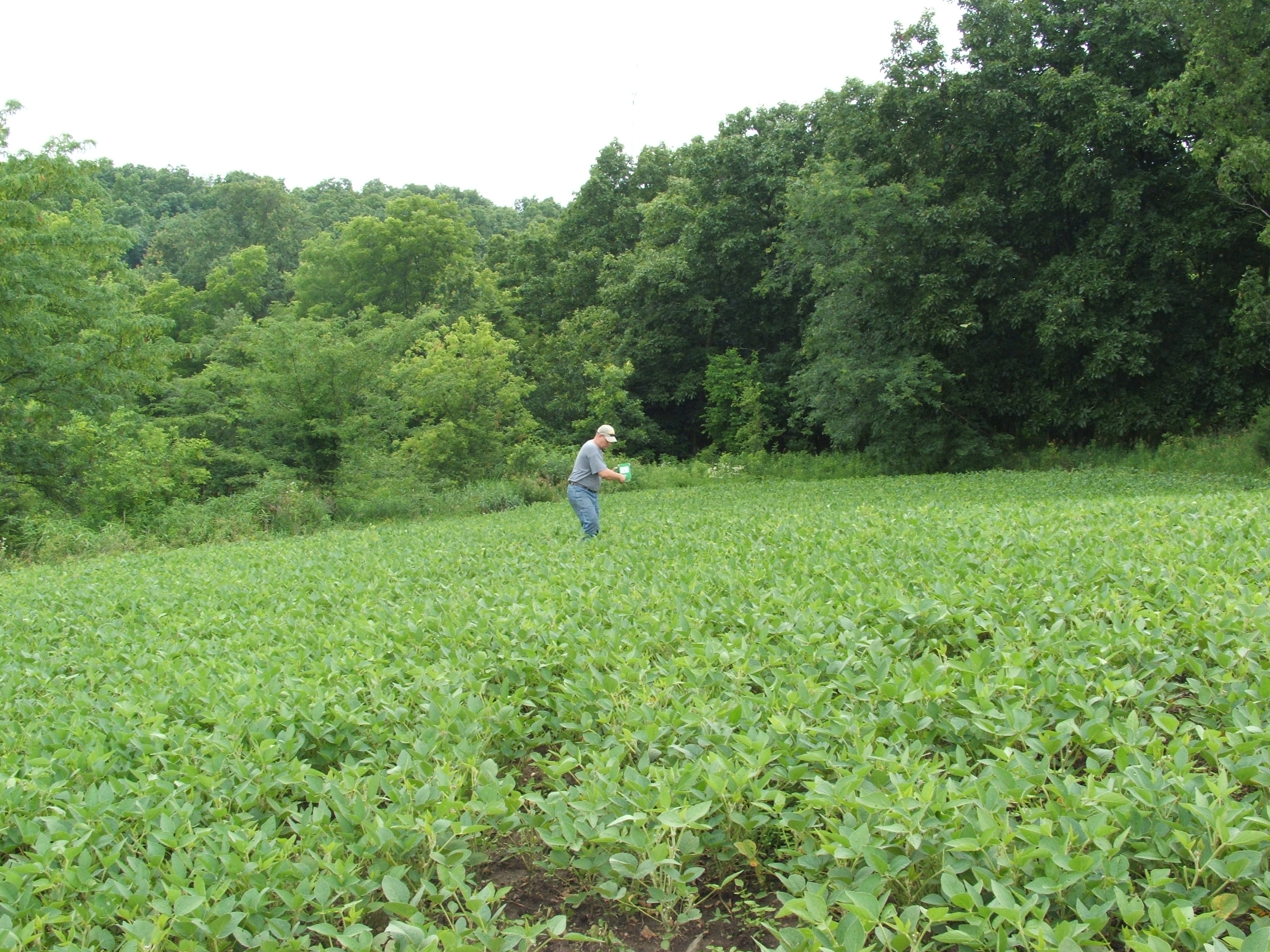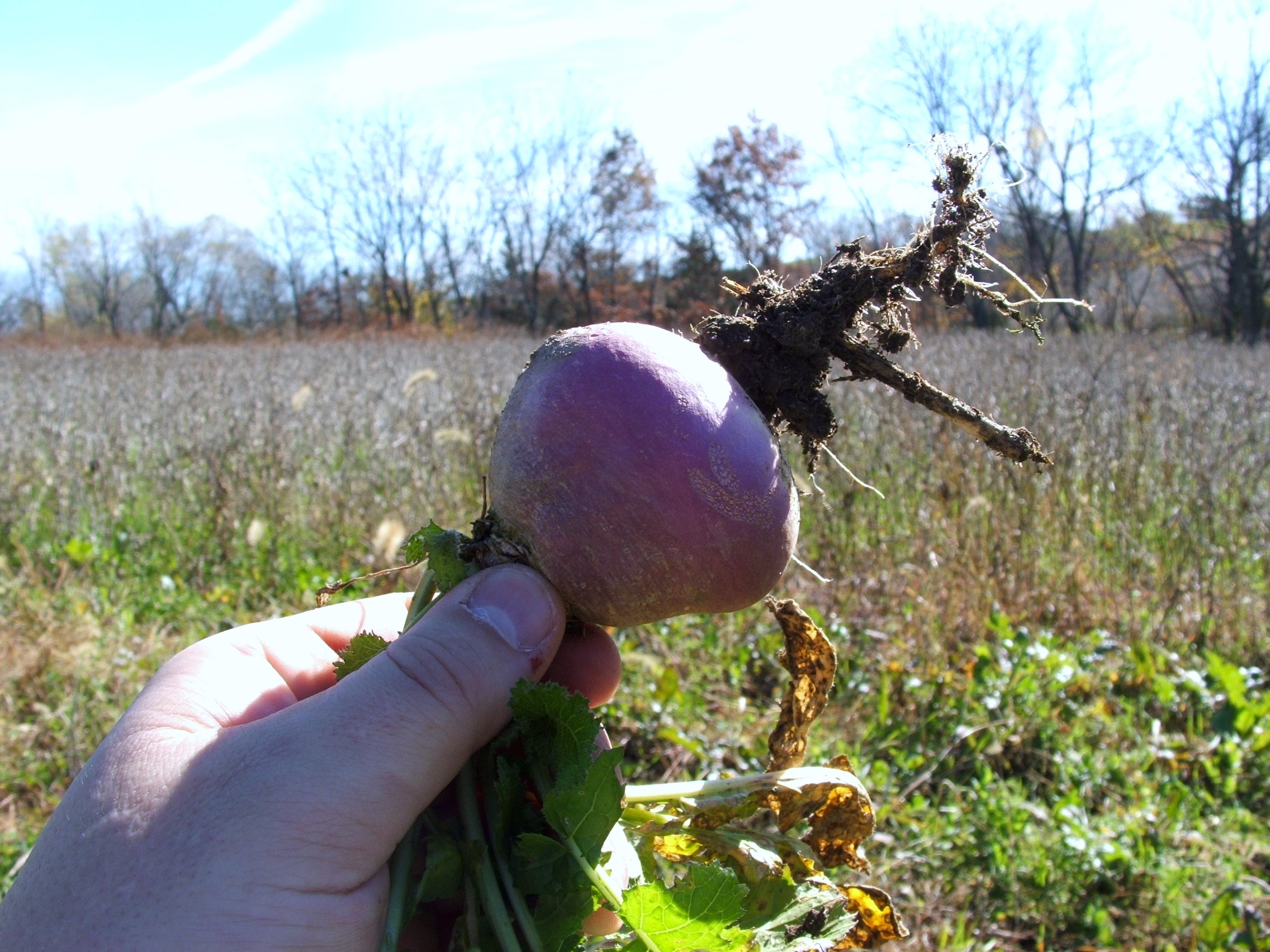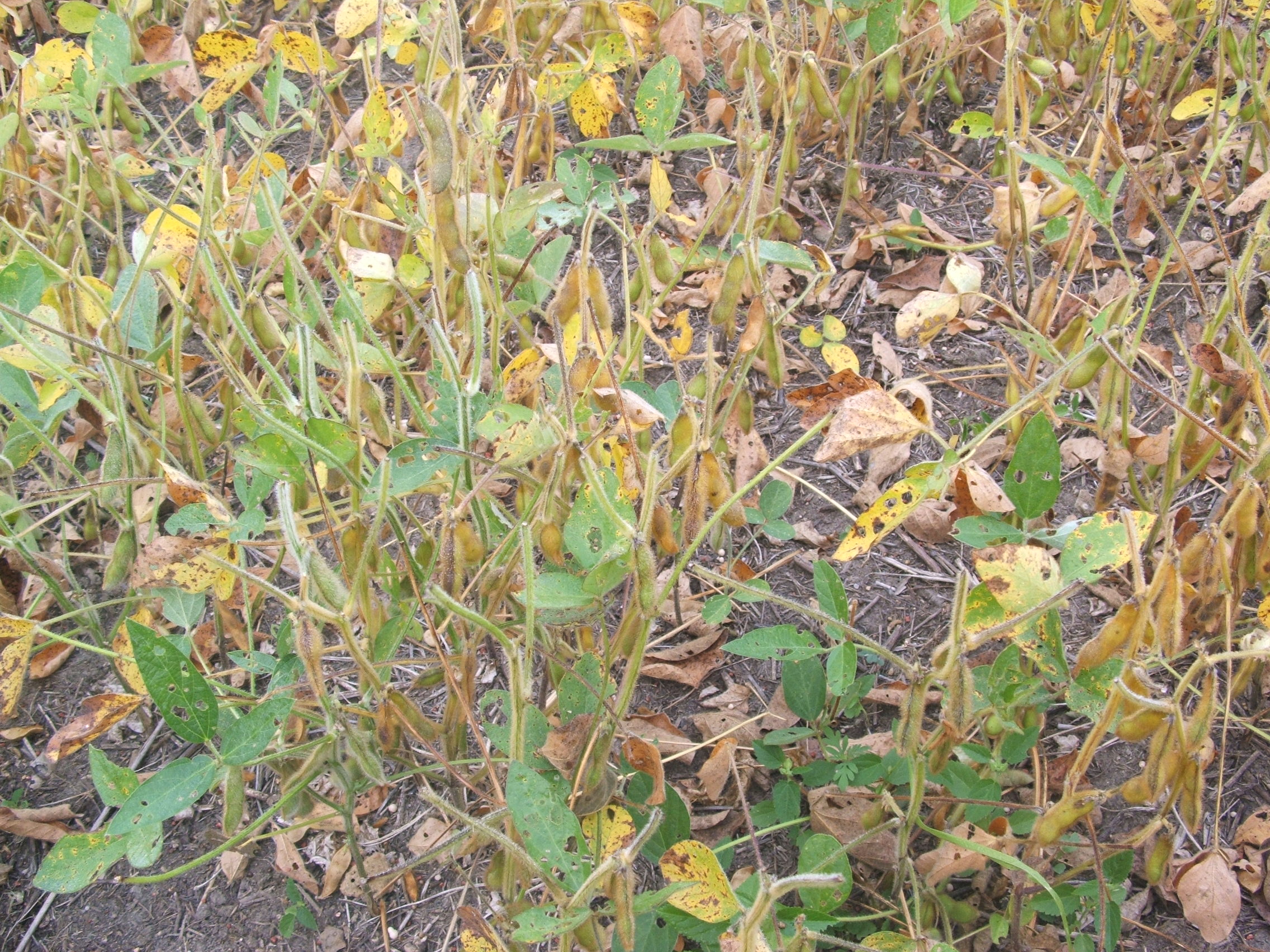Hunt 365 July-Over Seeding Food Plots (A version of this article is published in the July 2016 issue of Iowa Sportsman Magazine)
Over-seeding food plots is a hot topic these days. I’m not sure why but my gut tells me over-seeding is a popular way to try and salvage spring planted food plots that didn’t quite pan out. So, in a last ditch effort, the food plotter tries throwing some miracle seed over the top of a plot in hopes that it salvages an otherwise failed food plot. My gut tells me this because I’ve been there…done that. And in most cases over the past 30 years, my over-seeding attempts have failed miserably; until recently. So why then do I feel I have the ability to help other hunters on the subject? By learning from my mistakes!
Background Over-seeding a food plot is exactly what it sounds like…spreading seed over the top of an existing crop without tilling. Back when my over-seeding attempts failed miserably, it was because I didn’t understand moisture and nutrient requirements of plants, and because I believed the hype marketed by some food plot companies and truth stretching hunting acquaintances. You know…the guy that has a buddy that everything he tries works. Well, I would buy the fancy packaged seeds at high buck prices, spread the miracle seeds over an existing plot, and sit back and wait for…well…a miracle to happen. When it failed, I would either talk myself into that it actually worked or would blame the failure on the seed. It wasn’t the fault of the seed! And, I can’t blame the seed companies for their marketing because in most cases the information was there for someone willing to take it all in. If you don’t understand plant nutrient and moisture requirements then you only have two options…hope to get lucky or wait for that miracle. Over-seeding is also not the best choice most of the time when trying to establish a good brassica or rye plot for example. It has its place under the right conditions.
Why Over-seed Over-seeding is an appropriate topic for July. Mid-summer is the time when you can assess your spring planted food plots to determine how good they are. In some cases, there are reasons why a properly planted spring grain crop like soybeans or corn is showing signs of failure by mid-summer. Overgrazing and drought are the two reasons I’ve been stung with before. So, you find yourself in July with a dilemma on your hands. Your soybean, corn, or any other plot for that matter is hurting…but you feel that completely tilling under the crop would be wasting a good amount still in the field. This is common for a smaller soybean plot for example where the deer have browsed the green plants so heavily that you questions whether or not you’ll have anything left come fall. This is where a timely over-seeding of brassicas could really pay off.
How it Works If you are using brassicas as your over-seeding plant of choice in mid-summer, remember that turnips and rape need a fair amount of moisture and nitrogen to grow and prosper.

Good moisture is essential in making over-seeding successful. Here the author is hand seeding brassicas into a bean plot with good sub-surface moisture right before a rain.
This is where I have to go back to last month’s article and briefly re-visit how nitrogen fixation works. Remember that legume crops like soybeans, alfalfas, and clovers fix nitrogen from the air with their companion rhizobia bacteria. Remember also that the majority of this nitrogen is in the living plant roots, stem, and above ground foliage. Therefore, over-seeding with a variety like brassicas, which need good amounts of nitrogen, into a field planted into a legume won’t work very well unless additional nitrogen is provided. This is a big mistake I made in my early years of over-seeding. This is completely different from tilling under the legume—which puts back all that nitrogen as green manure. So…the decision is really this; do you till under the spring crop and create a new seed bed (rich in nitrogen) or over-seed to protect the current crop from tillage? For me it boils down to if there is still a decent crop to save, if there is I’m generally going to over-seed with a brassica blend and add additional nitrogen fertilizer. This same process or decision goes for corn or any other spring planted crop as well. If left standing, you must add nitrogen to the plot with your brassica seed or take your chances with lady luck. If you do decide to till under the plot to create a new seed bed, wait at least 2 weeks before planting the subsequent crop. This gives the first food plot foliage a chance to start decomposing.
Trying to establish a brassica food plot in mid-summer can also get difficult when recognizing that these plants need a fair amount of moisture to thrive. This is the second part of the equation I didn’t understand until more recently. Sure, you can over-seed with a turnip like Appin Turnips, and those seeds will remain dormant until they get some rain. But what happens all too often this time of year is longer stretches of high temperatures and periods without much rain at all. And because the plants have been over-seeded, it takes more moisture for a longer stretch to allow the plant to germinate and put down enough root length to be able to tap into subsurface moisture. Timing then, becomes critical when trying to make this work. If you over-seed when sub-surface moisture is low, and the seed germinates, it will very likely have poor growth or die all together. Waiting for good soil moisture levels…and then being prepared to over-seed right before a good soaker is key to making a summer planted over-seeding successful.
All of this can get complicated…so I want to go over this point by point:
- If truly over-seeding in the summer, you must add nitrogen. A good rule of thumb is 60lbs/acre.
- Brassicas like Appin Turnips, Purple Top Turnips, or blends work very good.
- Adequate sub-surface moisture and rain at the time of planting is critical.

This purple top turnip was the result of a July over-seeding in soybeans. Moisture and nitrogen are keys to making it work.
Fall Over-Seeding Summer over-seeding is difficult because moisture levels are usually low and the summer heat dries the soil about as fast as it gets hydrated. Fall over-seeding on the other hand is usually much easier and more seed choices are available. If you are not tilling in a legume crop to add nitrogen to the soil in the form of green manure (like clover, alfalfa, or green soybeans) you must once again add nitrogen at a rate of about 60lbs/acre. Waiting to broadcast the seed before a good rain is forecast is also a good idea. But, unlike the dog days of summer, late August and early September seeding usually offers cooler days and more soil moisture. This makes for a more successful scenario.
Brassicas are once again a good choice for fall over-seeding and Appins, Purple Tops, and rape seed are favorites of mine. But, this is also where winter rye really shines. Winter rye requires NO FERTILIZER because it can scavenge for nutrients unlike most other plants. It can germinate and begin to put down roots in less than 24 hours after a good soaking rain. The winter rye will stay green all fall and even into winter. A great seed blend choice for fall over-seeding would be a blend of Appins, Purple Tops, rape seed, and winter rye. I love to spread this blend over soybean plots just as the beans start to yellow in late summer or early fall. If you can get lucky and time this with a good fall rain you can really hit the jackpot. Moisture is really key in making this work, and adding the nitrogen if using brassicas will greatly increase your odds of success. For fall seeding, I would start trying to time the planting with a good rain about the third week in August. You are better off to be a week or two late than to plant when soil moisture is too low.

These beans are dying in mid-summer due to drought. In this case, I would till these beans under in the fall and create a new seed bed.
Unlike summer seeding, I’ll even do this into a great stand of loaded soybeans in the fall because I can increase the total amount of food the plot can provide. If using winter rye or a blend with winter rye, I’m also over-seeding a good cover crop into my grain field. As the green leaves of the beans dry up and fall off, I’m also providing another green forage crop that can take over when the green beans die off. The plot now contains both a green forage, and a dried grain crop…which should appeal to a deer’s appetite.
In Conclusion Over-seeding can work great in both summer and fall plantings but is not as easy as it might sound. Brassicas are good choices for summer seeding while winter rye or blends containing winter rye are excellent choices for fall over-seeding. Adequate moisture and nitrogen make over-seeding possible…without both chances are slim you will be successful. Over-seeding can be a great way to save a plot or to enhance a plot under the right conditions.
In July, I’m always assessing my spring planted plots and determining if too I need to over-seed to save a plot…this year will be no different. July is hot and nasty, dry, and most hunters have no interest in spending time in the field. If you do, it can really pay off.
In August’s article, I will be covering answers to the most often asked questions about fall food plotting.
